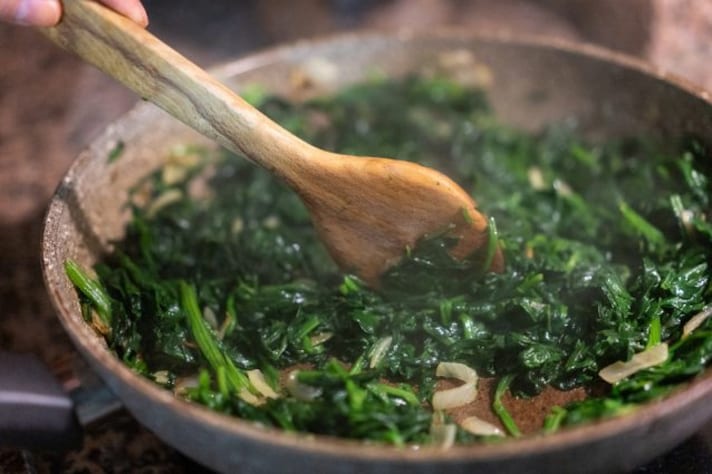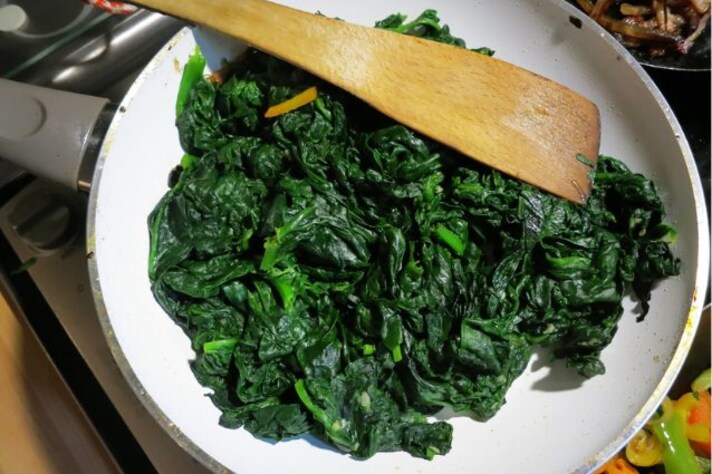Here’s Why You Should Never Let Your Spinach Steam After You Already Cooked Them!
Spinach is a nutritious powerhouse, but letting it steam after cooking can reduce its flavor and nutritional value. Overheating causes vitamins to break down, and the texture becomes mushy. To get the most out of spinach, it’s important to cook it just long enough, then remove it from heat promptly to preserve its benefits and taste.

Spinach—this leafy green is a powerhouse packed with vitamins, iron, and fiber, making it a staple in healthy diets everywhere. But there's one common cooking mistake many home cooks make that could be ruining all those nutrients: letting spinach steam after it's already cooked. This seemingly small error can diminish the goodness spinach offers, leaving you with less nutritional value than you intended. Here’s why it’s a mistake—and how you can avoid it to keep your greens at their best.
The Trouble with Overheating Spinach
Spinach is highly sensitive to heat. When you cook it, the cell walls break down, releasing all those beneficial nutrients like vitamin C, folate, and iron. However, once it's cooked, spinach can easily overcook if left in hot conditions for too long, like when it’s left steaming after cooking. Overheating these greens leads to the loss of valuable nutrients. The longer you expose cooked spinach to heat, the more vitamins leach out into the steam, turning what could be a healthy side dish into a nutritional dud.
Spinach’s Nutrient Breakdown Under Heat
One of spinach’s biggest claims to fame is its high levels of vitamin C, which supports your immune system and skin health. But, did you know that vitamin C is quite sensitive to heat? Once you’ve cooked your spinach, if it continues to steam, the heat further breaks down the vitamin, rendering it ineffective. Similarly, folate—another crucial nutrient—is heat-sensitive and can break down if spinach is left exposed to heat too long. This means that by allowing spinach to steam after cooking, you could be significantly reducing its nutritional impact.

How Steaming Affects Spinach Texture and Taste
If you’ve ever let cooked spinach sit for a while, you may have noticed the texture turning mushy and the taste becoming increasingly bitter. This isn’t just a visual issue—it’s a textural disaster too. Overcooked spinach becomes overly soft and slimy, with a bitter taste that makes it much less enjoyable to eat. The longer spinach sits in the steam, the more its delicate structure breaks down, leaving you with a soggy, less flavorful dish. The once-fresh, vibrant green can turn dull and unappealing.
Why the ‘Resting’ Time is Crucial
It’s tempting to let spinach sit after you’ve cooked it, especially if you're preparing a meal for a group. But letting it rest too long in a warm environment encourages excess moisture, which not only dilutes flavor but also promotes nutrient loss. To avoid this, make sure you remove your spinach from heat immediately after cooking to stop the steam from continuing to break it down. Let it rest briefly on the counter or plate, but never for too long!

The Best Way to Handle Spinach After Cooking
To get the most out of your spinach, timing is everything. The key is to cook it just until it wilts, which usually only takes a few minutes. After that, remove it from the heat source promptly. If you need to keep it warm for serving, consider using a warm, not hot, serving dish. Alternatively, you can cool it down quickly by draining any excess water and spreading it out on a plate or in a bowl, allowing it to cool faster.
For those who like to meal prep, spinach can be cooked, cooled, and stored properly to maintain its quality. Just make sure to drain it well before storing it in the fridge, and avoid reheating it more than once to prevent additional nutrient loss. A quick sauté in olive oil or even a brief steam followed by immediate cooling will ensure your spinach retains both flavor and nutritional value.
;Resize,width=767;)
;Resize,width=712;)
;Resize,width=712;)

